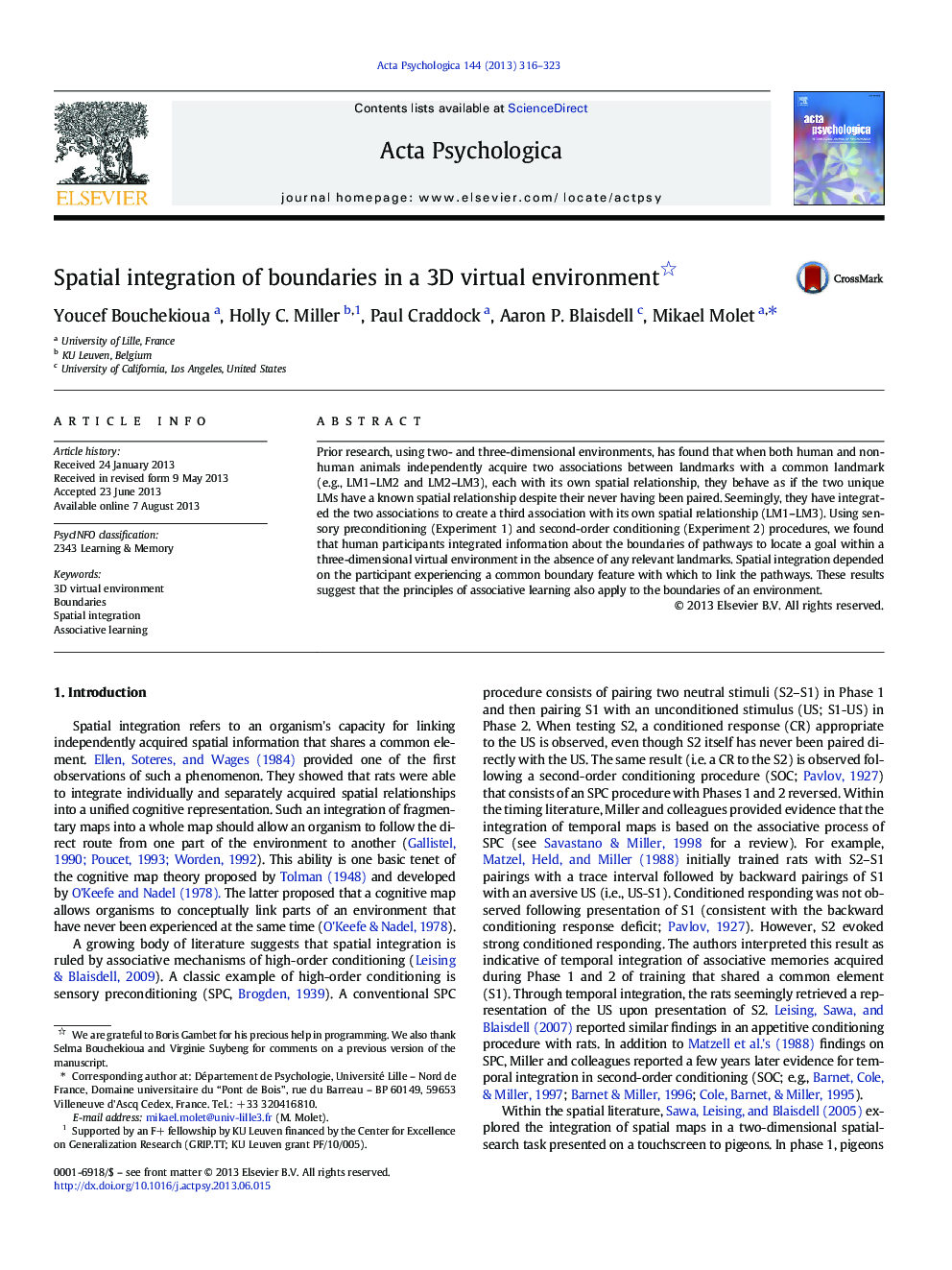| Article ID | Journal | Published Year | Pages | File Type |
|---|---|---|---|---|
| 10453778 | Acta Psychologica | 2013 | 8 Pages |
Abstract
Prior research, using two- and three-dimensional environments, has found that when both human and nonhuman animals independently acquire two associations between landmarks with a common landmark (e.g., LM1-LM2 and LM2-LM3), each with its own spatial relationship, they behave as if the two unique LMs have a known spatial relationship despite their never having been paired. Seemingly, they have integrated the two associations to create a third association with its own spatial relationship (LM1-LM3). Using sensory preconditioning (Experiment 1) and second-order conditioning (Experiment 2) procedures, we found that human participants integrated information about the boundaries of pathways to locate a goal within a three-dimensional virtual environment in the absence of any relevant landmarks. Spatial integration depended on the participant experiencing a common boundary feature with which to link the pathways. These results suggest that the principles of associative learning also apply to the boundaries of an environment.
Related Topics
Life Sciences
Neuroscience
Cognitive Neuroscience
Authors
Youcef Bouchekioua, Holly C. Miller, Paul Craddock, Aaron P. Blaisdell, Mikael Molet,
